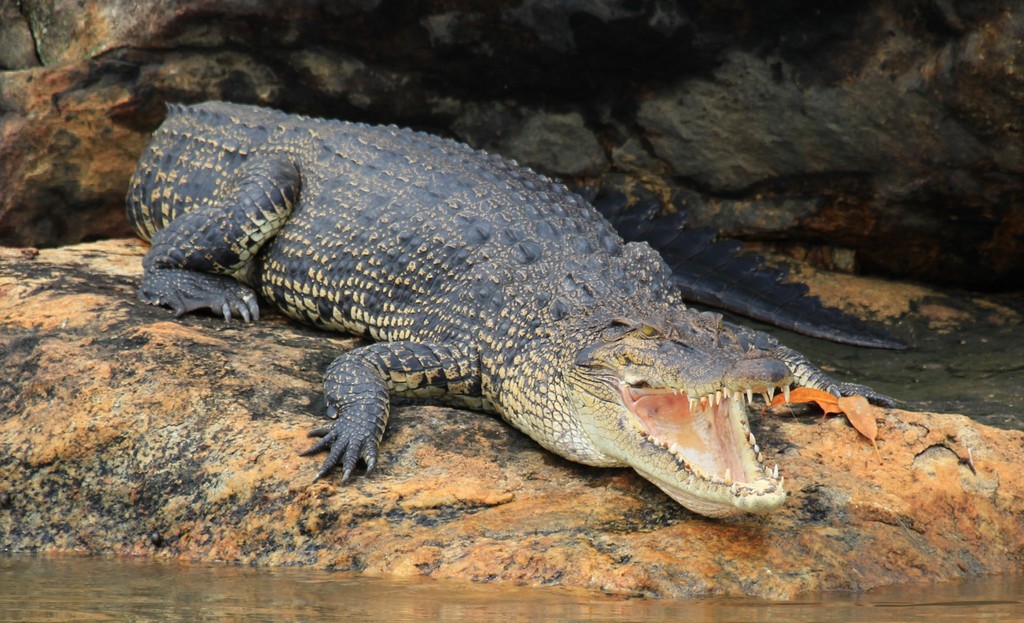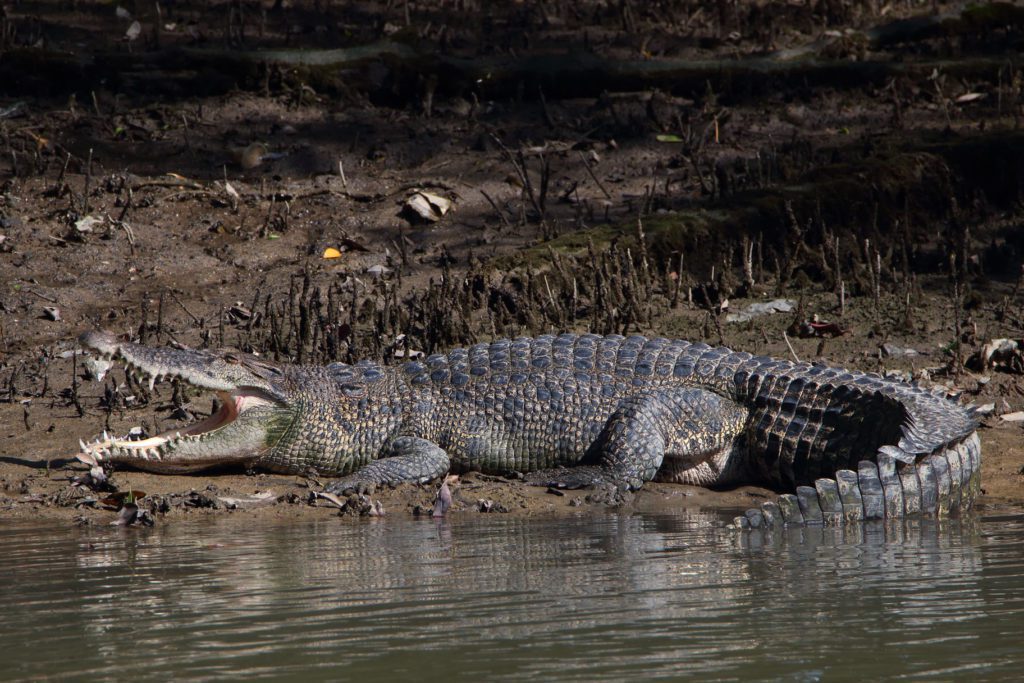Crested Crocodile (Crocodylus porosusIt is the largest of modern reptiles and one of the most dangerous predators in the world. This species is known for its aggressiveness, strength, and the ability to travel long distances on the high seas. The crested crocodile is not only excellent hunter in rivers and swamps, but also it attacks large animals and people.
It's there a living relict creature, which exists almost unchanged for millions of years. In this article, we will look at features of anatomy, behavior, habitat, food habits, hazards to humans and role in nature this unique predator.

Classification and scientific information
🔬 Scientific classification:
✔ The Kingdom: Animals (Animalia)
✔ Type: Chordal (Chordata)
✔ Class: Reptiles (Reptilia)
✔ Row: Crocodile-like (Crocodylia)
✔ Family: Crocodile trees (Crocodylidae)
✔ Gender: Crocodiles (Crocodylus)
✔ View: Crested Crocodile (Crocodylus porosus)
📌 Interesting!
This species is considered the largest and most aggressive among all crocodiles!
Appearance and dimensions
💠 Characteristic features of the crested crocodile:
• Length: Males reach 5-7 m, and some individuals-over 8 m!
• Weight: On average 600-1000 kg, but the largest instances weighed more than 2 tons.
• Colour: From olive oil to dark brown, with spots and furrows on the body.
• Chairman: Large, broad, with powerful jaws.
• Dorsal ridge: The name "grebnisty" comes from bone ridges on the head and back.
📌 Interesting!
Crested crocodiles they continue to grow all their lives, and the largest individuals are usually the oldest.

Range and habitat
🌍 Where do crested crocodiles live?
* Live in Southeast Asia, Australia and India.
* Common in swamps, mangroves, rivers and estuaries.
* Marked with the ability to overcome oceanic distances and they are found on the islands.
📌 Interesting!
Crested crocodiles they are not afraid of salt water and they can live even in the open sea!

Lifestyle and behavior
🔹 Territoriality
* Males very aggressive and they protect large territories.
* Young crocodiles can migrate hundreds of kilometers in search of a place to live.
🔹 Hunting and nutrition
* Use ambush method: they remain invisible for hours under water.
* Attack instantly and with incredible power they grab the victim.
* Eat well Rina, mammals, birds, turtles.
📌 Interesting!
Crested Crocodile it has a bite force of about 3,700 pounds per square inch "that's more than any other modern predator!"
Reproduction and development
💡 How do crested crocodiles breed?
* Females build nests made of plants and mud by the water.
* One masonry contains 40-90 eggswhich the female guards.
* Babies hatch through 80-90 days.
* The female carries the babies into the water and protects them for several months.
📌 Interesting!
The temperature of the nest determines the sex of the cubs: warmer nests produce more males, colder nests produce more females.
Danger to humans
☠ Why is the crested crocodile the most dangerous?
* Attacks without warning.
* Its powerful bite is almost impossible to unclench.
* Known for cases attacks on people in the water and near water bodies.
💉 Is there any protection?
• The only chance is to avoid the territories where they live.
* Seizures most often occur in Australia, Indonesia and Bangladesh.
📌 Interesting!
Crested crocodiles kill more people than sharks every year!

Role in nature
🌱 Why do you need crested crocodiles?
* Monitor animal populationsby preventing overpopulation.
* Contribute to cleaning of water bodiesby eating sick and weak animals.
* Important for the mangrove ecosystem.
📌 Interesting!
Crocodiles they are one of the oldest animals in the worldsurviving dinosaurs!
Are they threatened with extinction?
⚠ Population status
* Listed in the International Red Data Book.
* Major threats – skin hunting and habitat destruction.
* In some countries (e.g. Australia) protected by law.
📌 Interesting!
Thanks to conservation programs, the number of crested crocodiles increased over the last 50 years.
Conclusion
Crested Crocodile – one of the largest, strongest and most dangerous predators on the planet. He reigns in the waters of tropical Asia and Australiaby hunting a wide variety of prey. aggressiveness, strength and endurance they make it a real master of rivers and sea coasts.
💡 If you find yourself in the habitat of crested crocodiles-be careful! It is one of the most dangerous predators in the world.